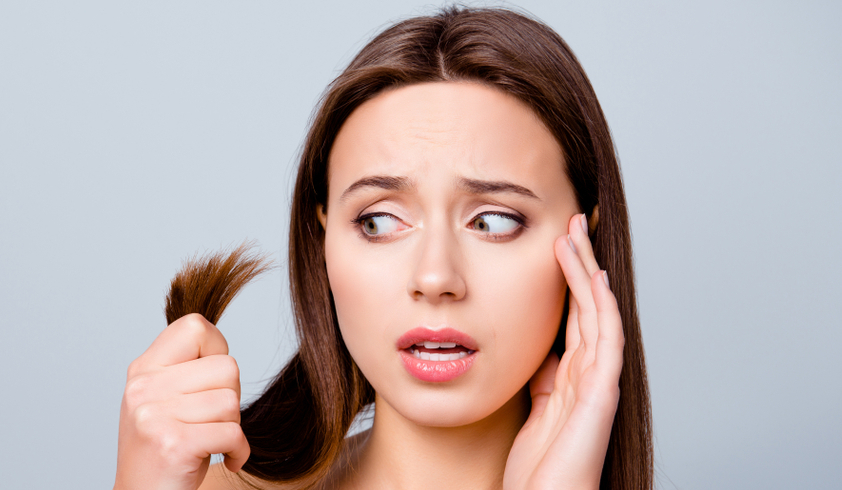Split Ends – Why Oh Why…
Posted on 11th November 2020
So you have probably picked up a section of your hair and annoyingly discovered a split at the end of a strand (or more..). But have you ever really wondered what are split ends and can you really prevent them from happening?
Split ends, known in the medical world as “trichoptilosis” (yes, they actually have a scientific name), are a result of fraying or splitting of the hair fibre, mostly at the end of the strand, though it can happen also in the middle of it, or even worse – the whole strand splits into two!
All hair types can suffer from split ends (although dry and brittle hair are more likely to get it), and this usually happens due to one or more of the following reasons –
• Improper detangling of the hair.
• Harsh Brushing of wet hair.
• Excessive blow drying.
• Chemical treatments (inc. Colouring, bleaching, perming etc.).
• Overuse of heat tools and dry styling products (such as gel, wax, hairspray).
• Wrong hair care products.
• Excessive dry hair.
• Rubbing hair ends.
• Using a clarifying shampoo too often.
So now you ask yourself – can I seal them back together using a product or treatment? The answer to that is that no product can help you get rid of them. The only real solution to restore a healthy fibre is a visit to the hair salon for a trim, where your split ends will get trimmed.
But the good news is - once the hair is shaped and the split ends are cut, you are ready to start your prevention plan.
As split ends are caused by the weakening of the hair shaft, your focus will need to be on damage avoidance and adapting a hair care to keep the hair moisturised and at best condition.
Firstly, as to colouring your hair and chemical process, there is not a lot you can do to avoid damage on the hair. However, choosing a natural colour rather than bleaching and using a strengthening treatment such as Olaplex in the process of colouring will reduce the amount of damage and stress the hair (and in particular the ends) suffer in the process.
In addition to that, the damage can also happen because of towel-drying and harsh brushing – rubbing the hair too roughly can weaken the cuticle and break the fibre. So instead, try to squeeze the excess water using an old t-shirt and then use a hairdryer on low heat to partially dry the hair. After that you can gently use a wide paddle brush once the hair began to dry to avoid a strain on the strand.
If your hair tends to tangle, try untangling it gentle with your fingers while you dry it rather than combing it harshly. A smoothing cream (like Davines “Relaxing moisturizing fluid”) and a wide tooth comb can also help you do that job easily with minimum damage.
Heat is also a major factor in ends splitting, and so we always recommend minimizing the use of electrical heat sources such as straighteners and curling tongues, as high temperature breaks the chemical bonds which provide strength to the hair fibre. But if your bouncy or straight weekend-hair is still important to you, don’t forget to use a good heat protection (like Davines “Melu/ Hair shield or "Oi/ All in one”) on your hair before applying any heat.
All in all just remember – split ends cannot be completely prevented, but to minimise them first get a trim and then focus on prevention. And enjoy your lovely hair.
P.S. If you have ever wondered how your split ends really look like, the images below show a few exmples of them under a microscope. So cool!




Share this post:












